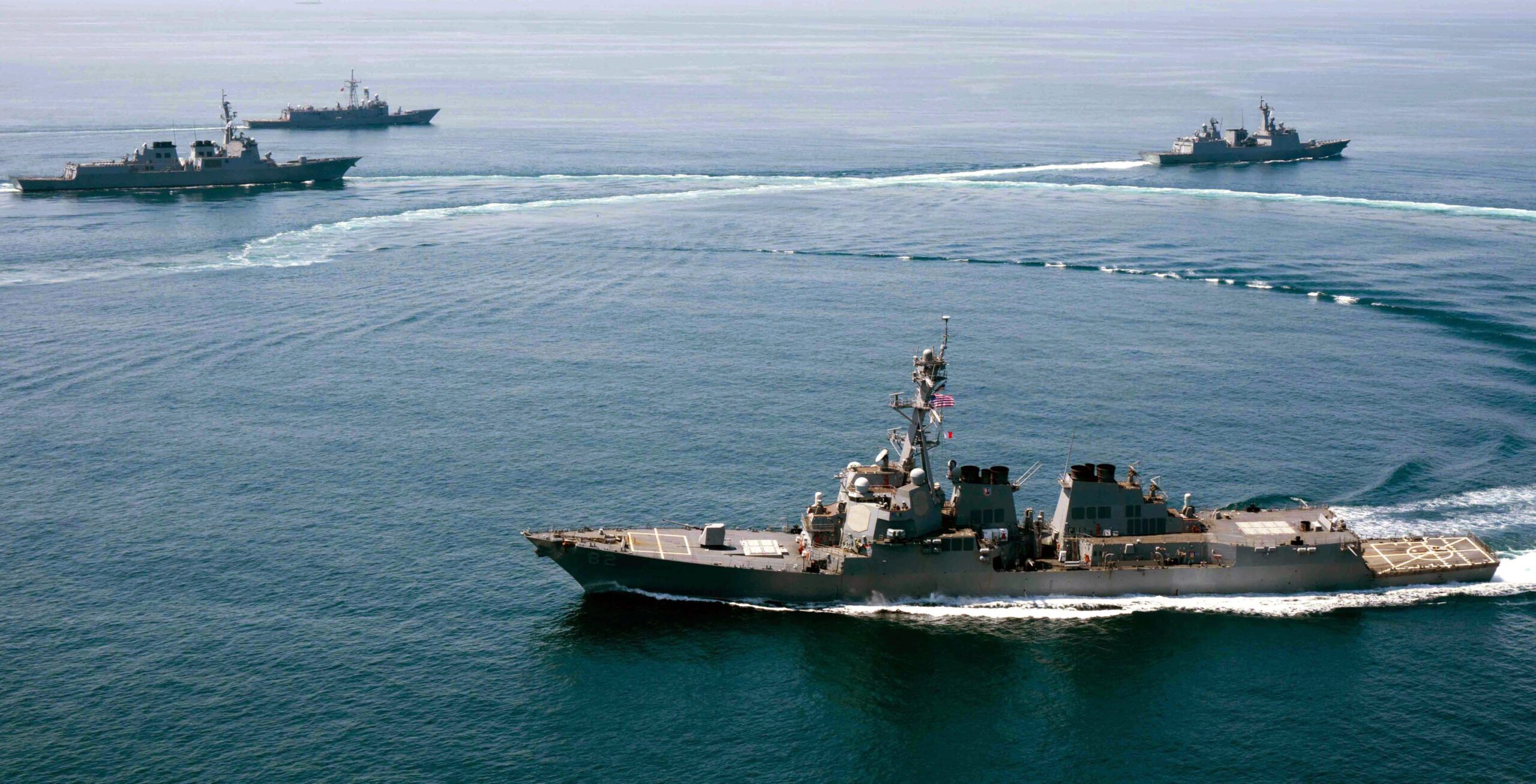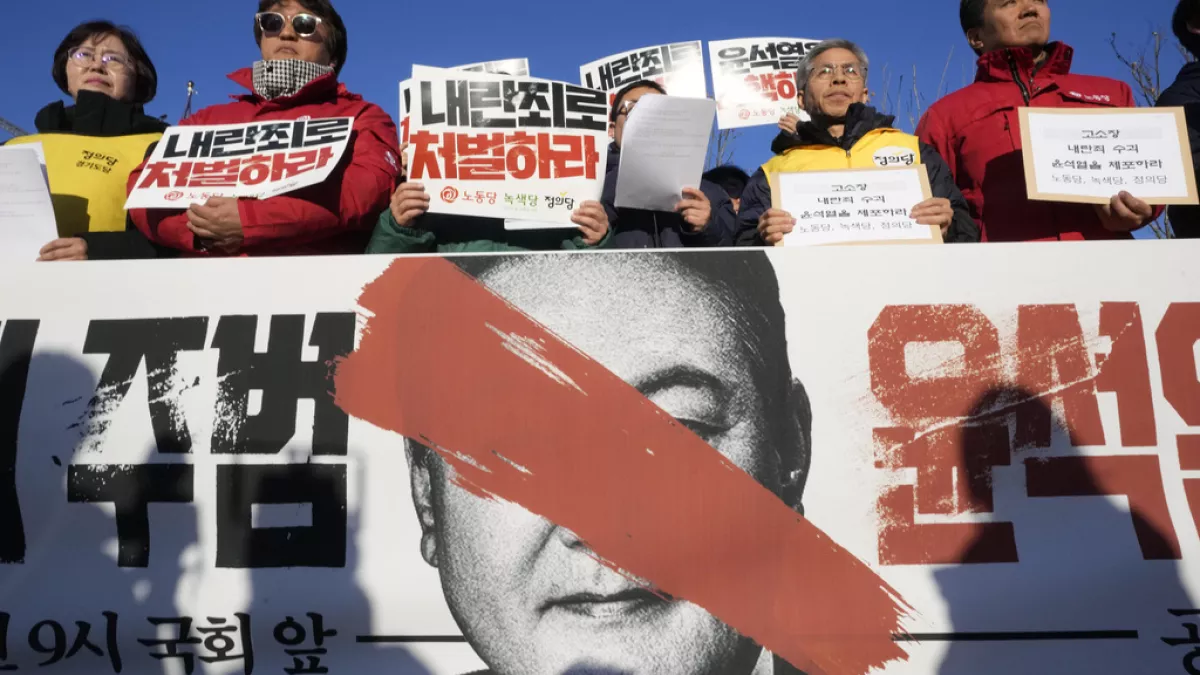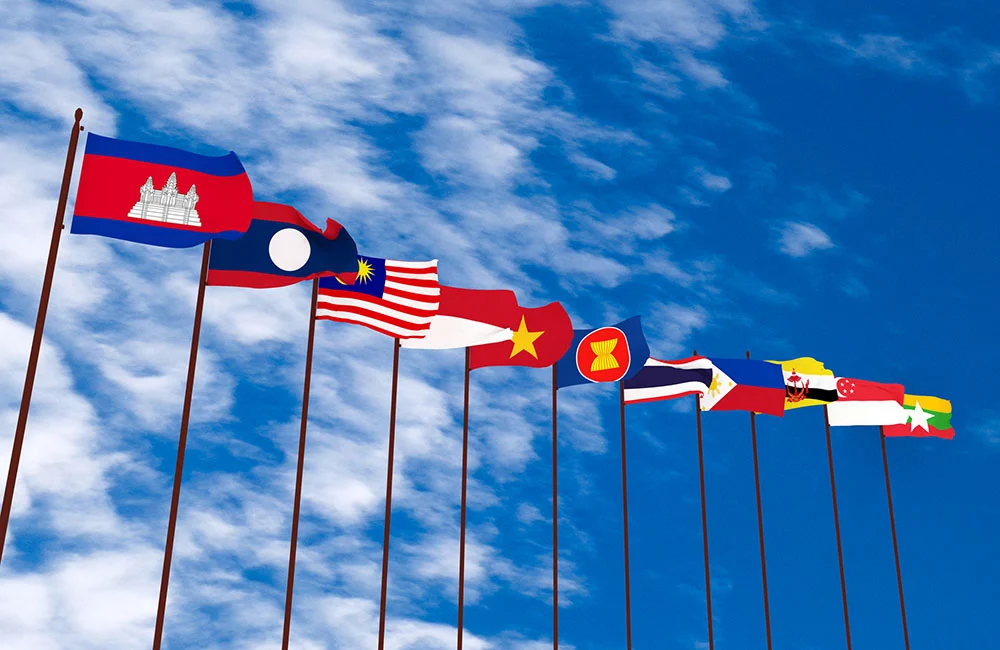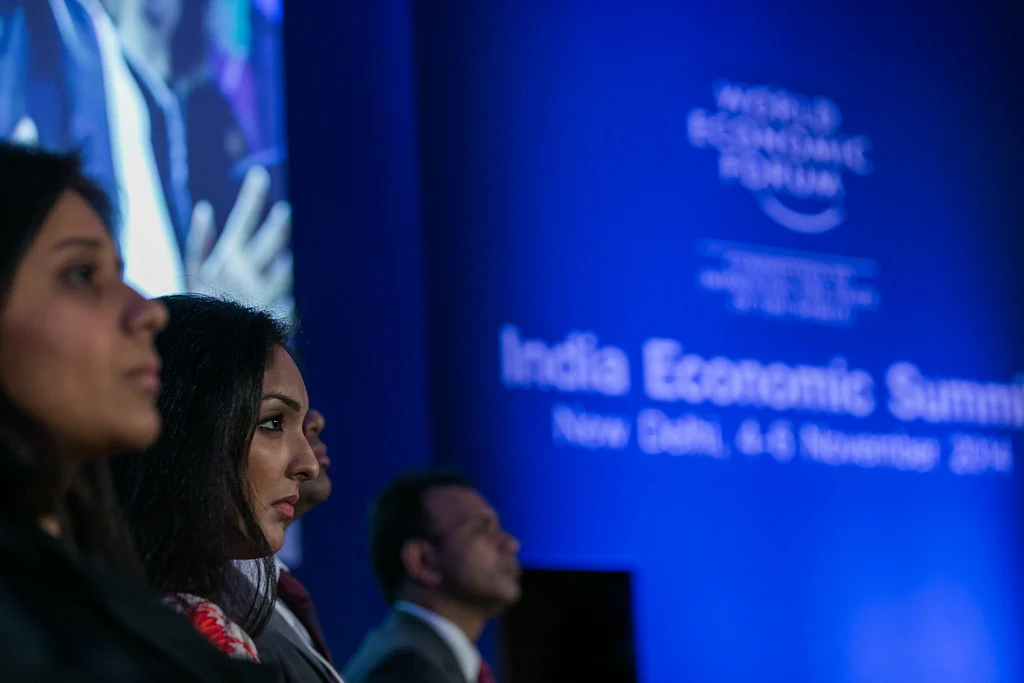In June 2024, the Philippine military released shocking footage of a violent skirmish in which the Chinese coast guard attacked a Filipino navy vessel using axes, knives, and water cannons, severing a sailor’s finger in the encounter. This incident reignited the long-simmering dispute in the South China Sea—a cauldron of international tensions created by overlapping territorial claims among bordering states, including the Philippines, Vietnam, Malaysia, Brunei, and China. Just a month before the confrontation, Philippine President Ferdinand “Bongbong” Marcos Jr. had publicly warned China that a “willful” killing of a Filipino citizen would compel the Philippines to invoke its mutual defense treaty with the United States, which would elevate the regional standoff to a greater conflict.[1] Yet, despite Marcos’ stern warning, Beijing has continued its expansionist actions, engaging in collisions with ships from neighboring countries near the contested Spratly Islands and the Second Thomas Shoal.[2] Between August 27 and September 2 alone, 203 Chinese vessels were tracked in disputed waters—the highest count recorded this year.[3] As instability grows and trust deteriorates, the risk of escalation in the South China Sea has reached a dangerous peak.
Regional volatility is largely fueled by a potential race toward hawkishness between China and the U.S.-backed ASEAN members. Beijing’s perception of relative power may introduce cognitive heuristics in its decision-making, inflating its confidence while downplaying the risks of aggression. Both prevailing approaches—the use of force and the appeal to norms—have proven inadequate: the former pushes towards greater violence, while the latter fails to effectively constrain Beijing’s expansionism. To successfully de-escalate the conflict and foster long-term stability, ASEAN members and the U.S. must avoid framing the dispute as a bipolar hegemons’ competition requiring a military solution. Instead, countries should focus on expanding a stronger multipolar coalition, both within and beyond the region, to demonstrate an assertive stance and a collective willingness for diplomatic resolution with Beijing.
Long Brewing Tensions
The South China Sea has long been contested due to its immense economic and geopolitical significance. It serves as a major commercial gateway for over 21% of annual global trade and holds 190 cubic feet of fossil fuel and 11 billion oil barrels beneath its waters.[4] Regional tensions have escalated largely due to China’s persistent claims, backed by the illegal construction of artificial islands and the controversial “nine dash line” demarcation. Since its initial land reclamation in 1952, China has militarized these isles by establishing outposts and conducting naval patrols especially on Paracel and Spratly Island.[5] In 2016, the Permanent Court of Arbitration in the Hague invalidated China’s maritime claims because it explicitly oversteps the territorial sovereignty and exclusive economic zones of other nations. However, the international verdict has failed to curb Beijing’s aggressive actions. Although China and its ASEAN neighbors have since pursued temporary negotiations to reduce tensions, recurring clashes in the Second Thomas Shoal highlight the difficulty of maintaining stability.
Among the nations threatened by China’s aggression, the Philippines has been the most outspoken in opposing Beijing’s unlawful dominance in the region. President Marcos has adopted a more resolute stance than his predecessor, strengthening Manila’s alliance with Washington by revising the 2014 U.S.-Philippine Enhanced Defense Cooperation Agreement and expanding U.S.-backed military presence in the area.[6] In 2023, the Marcos and Biden administrations formalized bilateral defense guidelines, affirming that any attack on either nation’s armed forces would trigger mutual defense obligations.[7] China, unsettled by the growing presence of another superpower in the region, condemned the U.S. as the “biggest troublemaker stirring up unrest” in the South China Sea.[8] With heightened regional tensions and expanded military engagement, the risk of a crisis driven by misperception or miscalculation has surged significantly.
Cognitive Heuristics: Powerful Aggressors’ Inflated Power
It is obvious that China’s dominance in military strength, security capabilities, and economic leverage surpasses that of any other regional claimant. However, its increasingly aggressive behavior in the region is driven more by its perception of relative strength than by those material sources of power. Christopher Fettweis argues that power often fosters a sense of exceptionalism, boosting individuals’ confidence and optimism even in the face of setbacks.[9] This inflated self-perception leads the powerful to believe they are exempt from the rules governing others and motivates them to rationalize unjust behavior through their elevated status. Fettweis further warns that these positive illusions tend to generate more hawkish behavior, as overconfidence prompts people to underestimate risks.[10] Caleb Pomeroy similarly contends that the sense of relative superiority can amplify belligerent tendencies or trigger aggressive impulses even in dispositionally dovish individuals.[11] While Beijing currently operates within the gray zone to avoid full-scale war, its blatant violations of international law and undeterred violence toward neighboring states illustrate how its perceived power fuels self-seeking hawkishness.
China’s power may not only hinder its ability to accurately assess the risks of its aggression but also foster misperceptions among other countries. In an asymmetric power structure, weaker states are prone to forming negative images of the aggressor, which can distort their information processing and decision-making.[12] Consequently, the fear of China’s regional dominance may prompt regional claimants to interpret situations as more threatening than they truly are, potentially increasing their inclination toward more militant responses. The real threat to the dispute, therefore, lies not in the physical presence of power but in how it manifests in the minds of both the aggressor and its victims.
Force or Norms?
Although some ASEAN claimants, such as the Philippines and Vietnam, have recently pursued conciliatory talks with China, these efforts have been temporary and thus ineffective in curbing the threat of violence in the South China Sea. Meanwhile, China has favored bilateral negotiations with other nations, as this strategy offers it greater leverage to assert its power compared to dealing with multiple nations collectively.[13] Discourse surrounding the dispute tends to oscillate between the pursuit of force and an appeal to global norms. As the Philippines solidifies its relations with America, there has been a growing call for a more robust military posture against China through an increased U.S. presence. The South China Sea dispute is therefore increasingly framed as an extension of a broader bipolar struggle between the two major powers, pushing both sides to be more proactive.[14] Proponents of this approach believe that countering a powerful regional aggressor necessitates military force backed by an equally powerful ally. However, when military strength becomes the central strategy for Washington and Manila, the risk of escalation to a full-scale crisis dramatically surges as it activates the security dilemma driven by mutual fears.
At the opposite end of the spectrum lies the reliance on international norms and morality to publicly reprimand China’s unlawful expansionism. While ASEAN members and their global allies have condemned Beijing for violating other nations’ territorial sovereignty, China has dismissed the 2016 Hague ruling as “ill-founded” and shown no inclination to alter its behavior.[15] This demonstrates the challenge of detering a nation’s aggression solely through moral pressure and public shaming within the anarchic structure of the global system. Hence, both approaches—force and norms—seem insufficient: the former carries significant risks, while the latter lacks the power to create meaningful change.
Rethinking the Conflict
The foremost priority in the South China Sea dispute must be the de-escalation of potential military risks and the promotion of peaceful coexistence. To achieve this, both America and its Southeast Asian allies should resist framing the dispute as a zero-sum tug-of-war between the world’s largest military powers. This persistent rhetoric will only exacerbate pre-existing negative perceptions of adversaries, pressuring the U.S. to adopt a more militant approach while simultaneously provoking China. Once such negative images take hold, they become self-reinforcing, as mutual distrust and suspicion draw both sides into an escalatory spiral of conflict.[16] According to Richard Herrmann, these schematic images frequently sway leaders’ decision-making processes, generating stereotypes that align with those perceptions.[17] Such ingrained enemy stereotypes then intensify leaders’ negative emotions and perceived threats, leading to more coercive policy choices.[18] Should the United States’ engagement in the region be inevitable, Washington must take the lead in transcending the current zero-sum rivalry to foster multilateral deterrence and long-term stability among regional actors.
The Cold War famously exemplifies the perils of heightened superpower rivalry in other regions and demonstrates how states can gradually reduce tensions through measured diplomacy. Throughout the Cold War, the United States and the Soviet Union engaged in an arms race fueled by mutual hostility. However, starting in the 1960s, both powers took critical steps toward stabilizing their relationship through agreements, including the Test Ban Treaty, the Antarctic Treaty, and the Treaty on the Peaceful Uses of Outer Space.[19] These treaties progressively fostered mutual toleration, established diplomatic channels, and set limits on competition. Later, more significant accords—such as the Helsinki Final Act and nuclear arms agreements—aimed to institutionalize détente more comprehensively.[20] Given that both China’s power perception and the U.S. military involvement can escalate fear-driven aggression in the region, countries must avoid framing the regional dispute as a mirror of the Cold War rivalry. The South China Sea dispute is not inherently a military problem, nor does it require a military solution. While the presence of armed forces may be unavoidable, they should not serve as offensive tools at the outset.
Toward a Stronger and Unified Neighborhood
Regional claimants must prioritize building and strengthening a multipolar coalition—both within and beyond Southeast Asia—to showcase their refusal to acquiesce to Beijing’s aggression while keeping avenues for peaceful resolution open. Conflicting interests tied to Beijing have hindered ASEAN members from coordinating an effective response to China’s pressure, resulting in the failure to establish a cohesive code of conduct for risk mitigation.[21] While the Philippines and Vietnam have recently adopted a more proactive stance, other nations, such as Cambodia and Laos, remain heavily dependent on Chinese investments and are reluctant to jeopardize potential economic benefits.[22] When voices and demands are fragmented, however, claimants with limited individual power cannot effectively counter Beijing’s leverage. Forming a united front among Southeast Asian neighbors would thus allow them to assert their collective sovereignty while also paving the way for multilateral diplomatic talks with all stakeholders. Moreover, states should actively seek external support from like-minded global allies and strengthen strategic alliances founded on solidarity. Therefore, a multi-layered cooperative approach is essential, incorporating a robust support bloc from external actors that aligns with the unified objectives of a strong multilateral coalition in the region. This interlaced, multilateral diplomacy would help counterbalance the overbearing strength of the regional aggressor and mitigate the tendency to view the dispute as a mere binary confrontation between China and the United States.
The looming threat of violence in the South China Sea underscores the urgent need to de-escalate the conflict before it escalates into a greater crisis. China’s perception of its relative capabilities may foster overconfidence and cloud its cognitive ability to assess the risks of its aggressive behavior. The prevailing rhetoric that emphasizes the contest between Washington and Beijing can also lead to misperception, compelling both sides to adopt more militant strategies. The primary focus in the dispute therefore must lie in solidifying a multilateral coalition among regional and global actors to establish a multi-tiered collective power. ASEAN members should navigate a middle path that balances their resolve to resist Beijing’s threats with the necessity of mitigating risks through peaceful diplomacy.
Yeji Kim is a fourth-year undergraduate student pursuing a major in International Relations and minors in Sociology and Environmental Studies. Her main research interests include international and human security threats, diplomacy, and foreign policy, with a particular focus on East Asia. She is currently conducting research on the impact of historical collective trauma on state foreign policy, using South Korea as a case study. As the lead editor for the East Asian section, she hopes to examine intertwined geopolitics of East Asian nations while fostering meaningful discourse on the region’s growing global influence.
Bibliography
Chang, Agnes, Camille Elemia, and Muyi Xiao. “China’s Risky Power Play in the South China Sea.” The New York Times, September 15, 2024. https://www.nytimes.com/interactive/2024/09/15/world/asia/south-china-sea-philippines.html?searchResultPosition=1.
Fettweis, Christopher J. “3. Unipolarity and Perception.” Essay. In Psychology of a Superpower: Security and Dominance in U.S. Foreign Policy, 74–98. New York City, NY: Columbia University Press, 2018.
Glaser, Bonnie S., and Gregory Poling. “China’s Power Grab in the South China Sea.” Foreign Affairs, June 26, 2023. https://www.foreignaffairs.com/articles/china/2021-08-20/chinas-power-grab-south-china-sea.
Guinote, Ana. “How Power Affects People: Activating, Wanting, and Goal Seeking.” Annual Review of Psychology 68, no. 1 (January 3, 2017): 353–81. https://doi.org/10.1146/annurev-psych-010416-044153.
Hass, Ryan. “Avoiding War in the South China Sea.” Foreign Affairs, July 9, 2024. https://www.foreignaffairs.com/united-states/avoiding-war-south-china-sea.
Herrmann, Richard K., James F. Voss, Tonya Y. Schooler, and Joseph Ciarrochi. “Images in International Relations: An Experimental Test of Cognitive Schemata.” International Studies Quarterly 41, no. 3 (September 1997): 403–33. https://doi.org/10.1111/0020-8833.00050.
Mazarr, Michael J. “The Looming Crisis in the South China Sea.” Foreign Affairs, April 11, 2024. https://www.foreignaffairs.com/united-states/looming-crisis-south-china-sea.
Pomeroy, Caleb. “Hawks Become US: The Sense of Power and Militant Foreign Policy Attitudes.” Security Studies 33, no. 1 (September 28, 2023): 88–114. https://doi.org/10.1080/09636412.2023.2252736.
Vitug, Marites Dañguilan. “America and the Philippines Should Call China’s Bluff.” Foreign Affairs, September 23, 2024. https://www.foreignaffairs.com/china/america-and-philippines-should-call-chinas-bluff.
“What Is the South China Sea Dispute?” BBC News, July 7, 2023. https://www.bbc.com/news/world-asia-pacific-13748349.
- Ryan Hass, “Avoiding War in the South China Sea,” Foreign Affairs, July 9, 2024, https://www.foreignaffairs.com/united-states/avoiding-war-south-china-sea. ↑
- Ibid. ↑
- Christopher J. Fettweis, “3. Unipolarity and Perception,” essay, in Psychology of a Superpower: Security and Dominance in U.S. Foreign Policy (New York City, NY: Columbia University Press, 2018), 74–98. ↑
- “What Is the South China Sea Dispute?,” BBC News, July 7, 2023, https://www.bbc.com/news/world-asia-pacific-13748349. ↑
- Ibid. ↑
- Hass. ↑
- Marites Dañguilan Vitug, “America and the Philippines Should Call China’s Bluff,” Foreign Affairs, September 23, 2024, https://www.foreignaffairs.com/china/america-and-philippines-should-call-chinas-bluff. ↑
- Chang et al. ↑
- Fettweis, 80. ↑
- Ibid, 81. ↑
- Caleb Pomeroy, “Hawks Become US: The Sense of Power and Militant Foreign Policy Attitudes,” Security Studies 33, no. 1 (September 28, 2023): 88–114, https://doi.org/10.1080/09636412.2023.2252736, 89. ↑
- Fettweis, 87. ↑
- “What Is the South China Sea Dispute?” BBC News. ↑
- Hass. ↑
- “What Is the South China Sea Dispute?” BBC News. ↑
- Fettweis, 89. ↑
- Richard K. Herrmann et al., “Images in International Relations: An Experimental Test of Cognitive Schemata,” International Studies Quarterly 41, no. 3 (September 1997): 403–33, https://doi.org/10.1111/0020-8833.00050, 412. ↑
- Ana Guinote, “How Power Affects People: Activating, Wanting, and Goal Seeking,” Annual Review of Psychology 68, no. 1 (January 3, 2017): 353–81, https://doi.org/10.1146/annurev-psych-010416-044153, 358. ↑
- Michael J. Mazarr, “The Looming Crisis in the South China Sea,” Foreign Affairs, April 11, 2024, https://www.foreignaffairs.com/united-states/looming-crisis-south-china-sea. ↑
- Ibid. ↑
- Vitug. ↑
- Bonnie S. Glaser and Gregory Poling, “China’s Power Grab in the South China Sea,” Foreign Affairs, June 26, 2023, https://www.foreignaffairs.com/articles/china/2021-08-20/chinas-power-grab-south-china-sea. ↑








